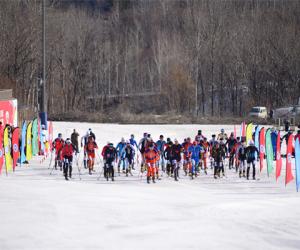During the later Tang and early Song periods (approximately between 750 and 1000 AD) tea consumption – the drinking and eating of tea – caught on in a big way across Tibet. The tea that the Tibetans most favoured was Pu’er Tea, which takes its name from Pu’er Prefecture near Simao City in southern Yunnan. The Tibetans began to mix fermented leaves of Pu’er tea with yak butter and salt to make a brew which rapidly became a staple, providing important high-calorie nutrition in the cold, high tablelands where fresh vegetables were few and the traditional diet rich in meat and dairy products. Tea leaves leavened this heavy diet and soon made a substantial contribution to general Tibetan health and well-being including, as a significant side benefit, helping to prevent chapped lips.
Today butter tea, known in Tibet as bod ja or ‘Tibetan tea’ or ja srub ma or ‘churned tea’ [the ja is clearly cognate with the English ‘char’ and similarly derived from the Chinese cha] remains as popular as ever, not just in Tibet, but also in parts of Yunnan, Sichuan, Gansu, Qinghai and Xinjiang within China, as well as in Bhutan, Sikkim, Nepal and Ladakh beyond China’s borders.
Most Western visitors to these regions agree that butter tea is very much an acquired taste. Frederick Spencer Chapman, author of Lhasa: The Holy City summed up Tibetan tea etiquette for visitors rather well in 1940, and things have changed but little since: ‘The leaves are boiled for several hours, then the infusion is poured into a section of hollow bamboo, where it is churned up with a plunger, together with a handful of salt, a pinch of soda, and a good lump of butter – usually rancid. The result is a purplish liquid of unusual taste for tea, but as soup excellent’.
Chapman may have been exaggerating when he claimed that ‘any good Tibetan drinks fifty or sixty cups of tea every day of his life’, though it is credibly reported that Tibetan nomads, at least, may drink as many as forty cups a day. Chapman also bemoaned the fact that ‘Certainly we cannot grow it (Chinese brick tea) in India, which is a pity, because every year thousands of loads of tea come over the passes several months’ journey from China’. In fact, the brick tea Chapman describes was almost exclusively transported by caravan, along the old Tea-Horse Road, from Pu’er in southern Yunnan, as well as from Ya’an in Sichuan.






